We’ve been writing and publishing Buffer’s State of Remote Work report for six years now, and we’ve learned a lot about the trends, benefits, and struggles of remote workers along the way. This year, after releasing the report, we had several people comment that they wondered what the results would be like for only people who are managers — and it’s a good question!
We weren’t clear enough when publishing the report that the State of Remote Work already includes people managers and remote work leaders. Still, it felt like an opportunity to dive deeper into the data to pull out more data specific to leaders.
While we didn’t ask if someone was a people manager when they completed the State of Remote Work survey (don’t worry, it’s already on the list for next year), we did ask about the kind of role that someone has, and one option was “leadership.” So, here’s what we learned looking at the results from the State of Remote Work and comparing those who work in leadership to those who don’t — the answers might surprise you.
Leaders still overwhelmingly want to work remotely
To start, leaders still want to work remotely for the rest of their careers (99 percent selected this option) and would recommend remote work to others (another 99 percent selected this option). This is only slightly higher than non-leaders, who were at 98 percent for both questions. Ultimately, no big difference between leaders and non-leaders here.
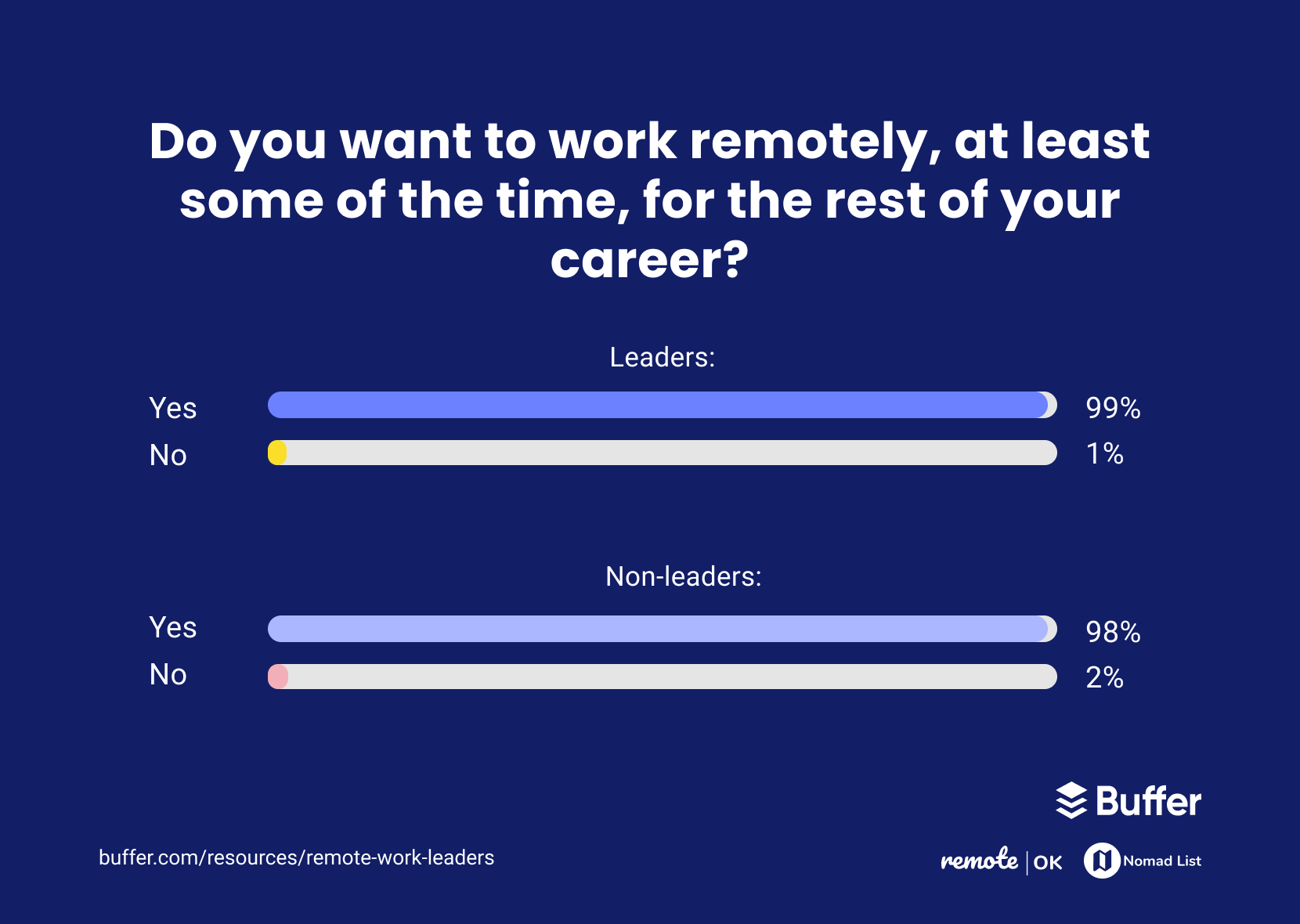
We also asked respondents to describe their experience with remote work — and interestingly, leaders were more likely to select that they had a positive experience. Ninety-six percent of leaders selected that their experience was very positive or somewhat positive compared to 90 percent of non-leaders.
The difference between how leaders and non-leaders experience remote work isn't drastic, though leaders are more likely to have a positive experience than non-leaders.
Leaders do work differently
When it comes to how remote leaders work, there are some differences between non-leaders and leaders who work remotely in their preferences for working in a hybrid setup, their work location, and being on camera.
The biggest difference is that while leaders still primarily prefer working fully remotely (65 percent selected fully remote as their preferred work structure), there is a greater number who would prefer a hybrid but remote first set up, with 27 percent of leaders selecting that option compared to 20 percent of non-leaders.
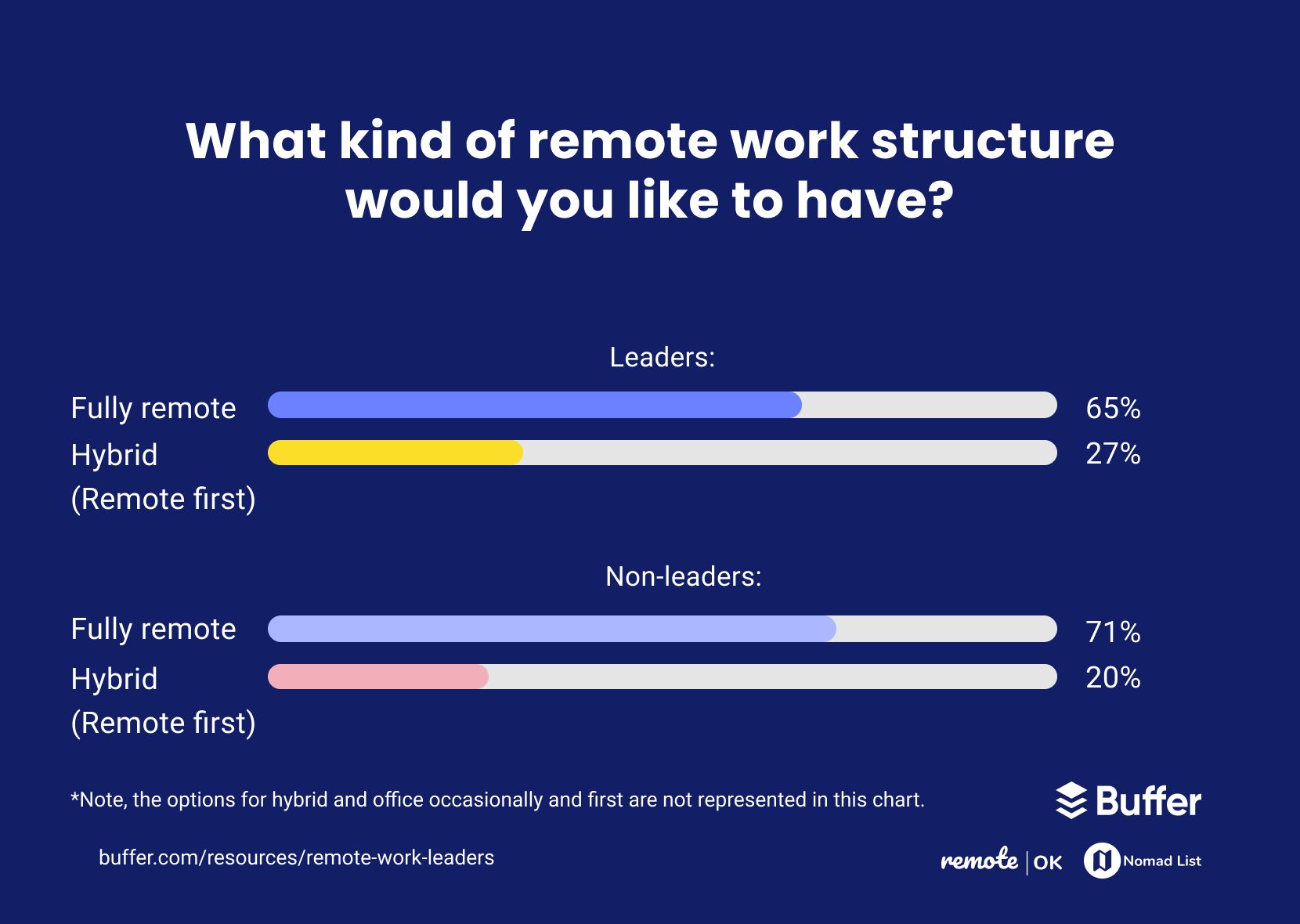
Leaders are also more likely to have experience with the hybrid setup. Forty-two percent of leaders worked in a hybrid setup compared to 35 percent of non-leaders.
Similarly, leaders were less likely to work from home than non-leaders, though the majority still did; 75 percent of leaders selected they worked from home compared to 83 percent of non-leaders.
The final question we looked at was about being on camera — 76 percent of leaders prefer to have their camera on for video calls compared to 62 percent of non-leaders.
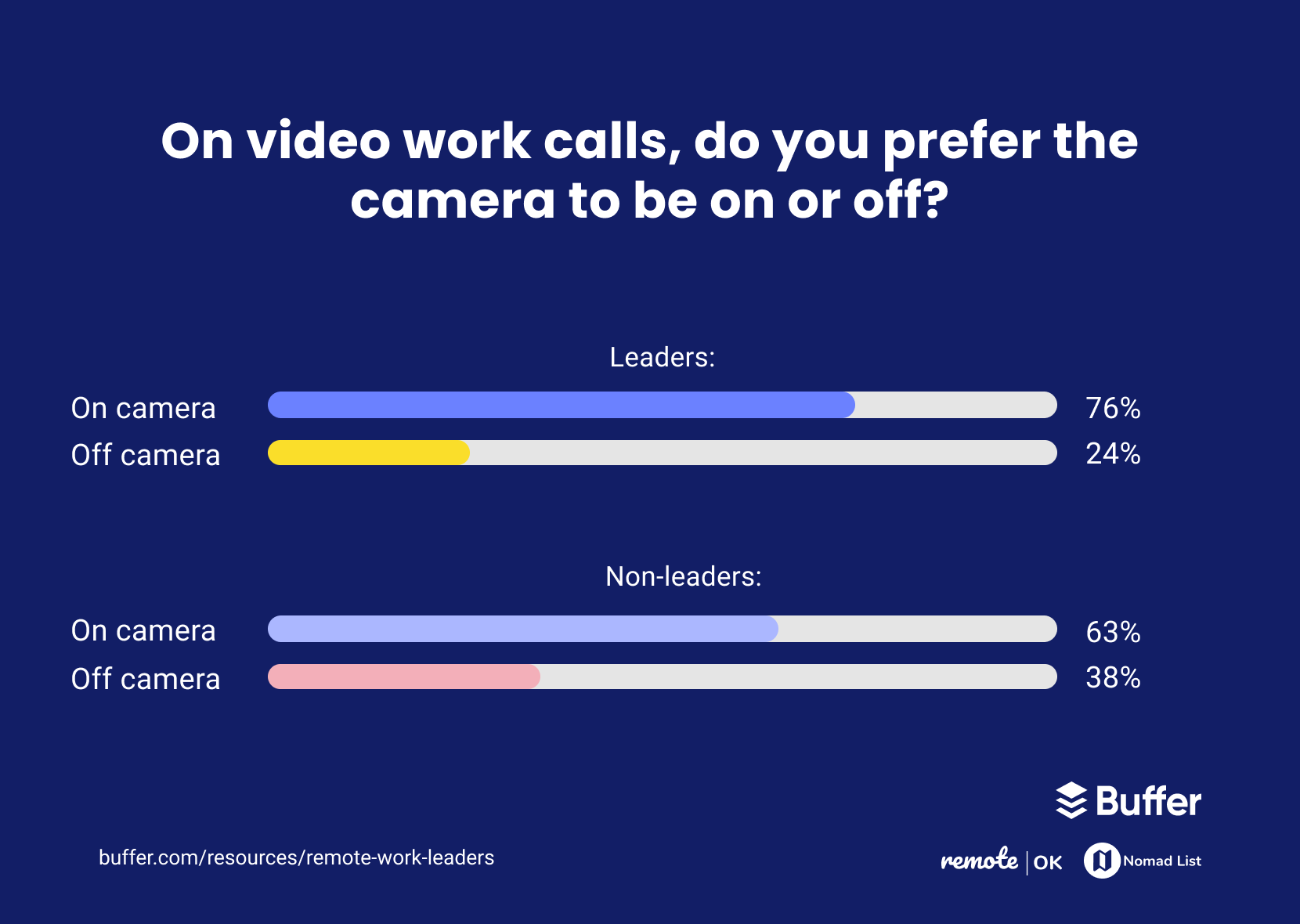
Overall, the responses from leaders were fairly similar to non-leaders here, but with enough variation that it’s clear there’s a difference between how these two groups get work done.
The struggles of remote leaders
Despite the many benefits of remote work, leaders still face the same struggles as non-leaders, with a few differences.
The lack of structure and routine that comes with remote work can be a double-edged sword. On the one hand, it allows for greater flexibility and autonomy. On the other hand, it can be easy to become isolated. This is a struggle that many remote workers share, and leaders are no exception. The top struggle for remote workers was the same for both leaders and non-leaders — staying home too often because they don’t have a reason to leave.
Another challenge that remote leaders face is the temptation to work outside of traditional office hours. Without the constraints of a physical office, it can be easy to let work bleed into other parts of life, which can lead to burnout and a lack of work-life balance. Leaders, in particular, are more likely to fall into this trap than non-leaders.
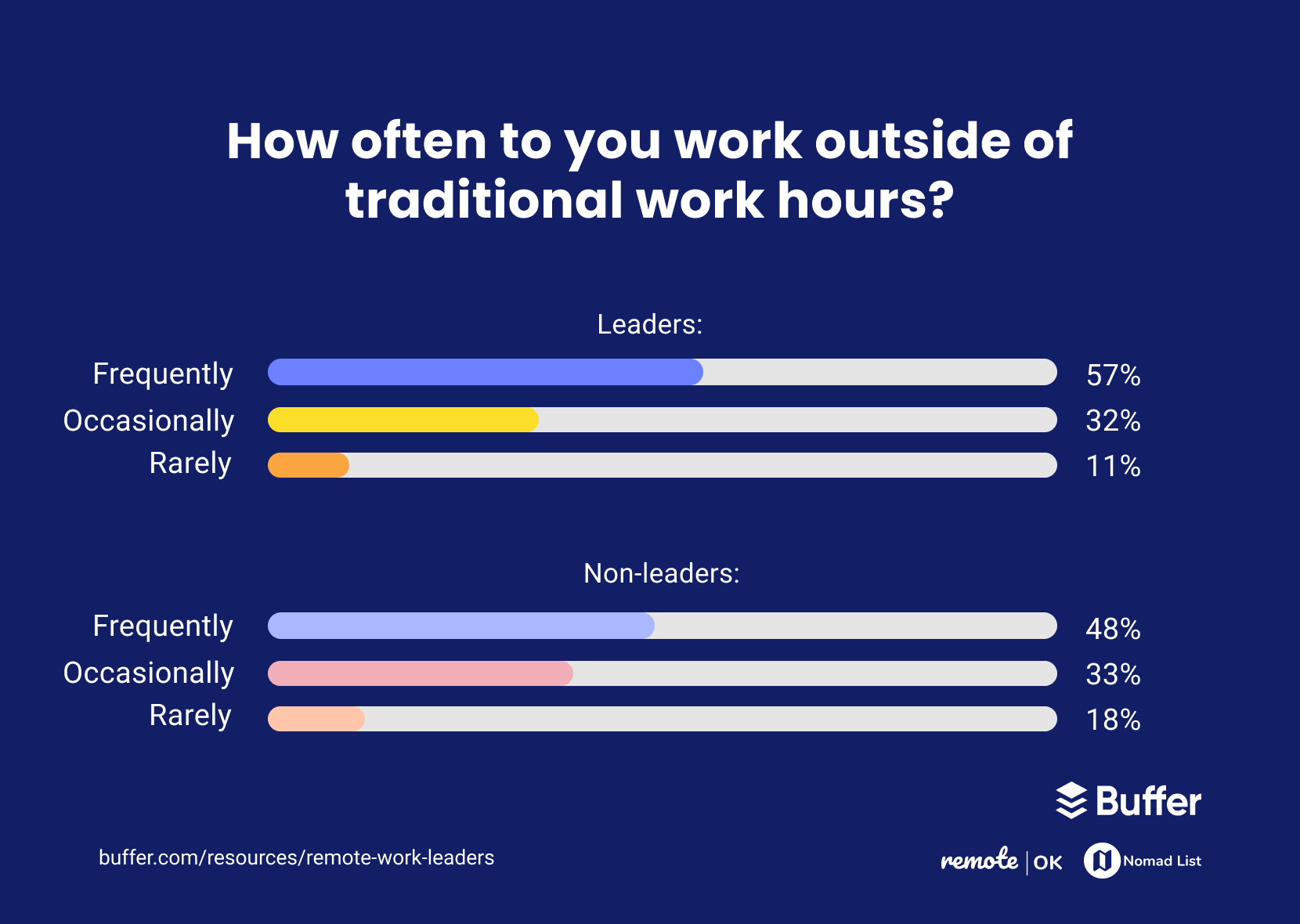
The final struggle that many leaders face is creating boundaries between work and life. Compared to non-leaders, leaders are more likely to find it difficult to separate the two, with 40 percent of leaders struggling with this compared to 30 percent of non-leaders.
Though the top struggle remains the same, leaders overall are more likely to find it challenging to disconnect from work and to work outside of regular hours.
Leaders are more neutral on careers and remote work
Over the last few years, the topic of career growth for remote workers has surfaced many times, with some wondering if the move to remote work could negatively impact their career trajectory. The topic of remote career growth is still somewhat split. In our 2023 State of Remote Work report, respondents were much more likely to select that career growth was easier while working remotely than the prior year, with 36 percent of respondents selecting that option. Another 36 percent said remote work had no impact on their career growth.
Leaders fall into the category of being more neutral about the impact of remote work on career growth. Forty-two percent of leaders believe that remote work has no impact on career growth compared to 36 percent of non-leaders. Leaders are also more likely to say that remote work has no impact on promotions (58 percent selected this) compared to non-leaders (56 percent).
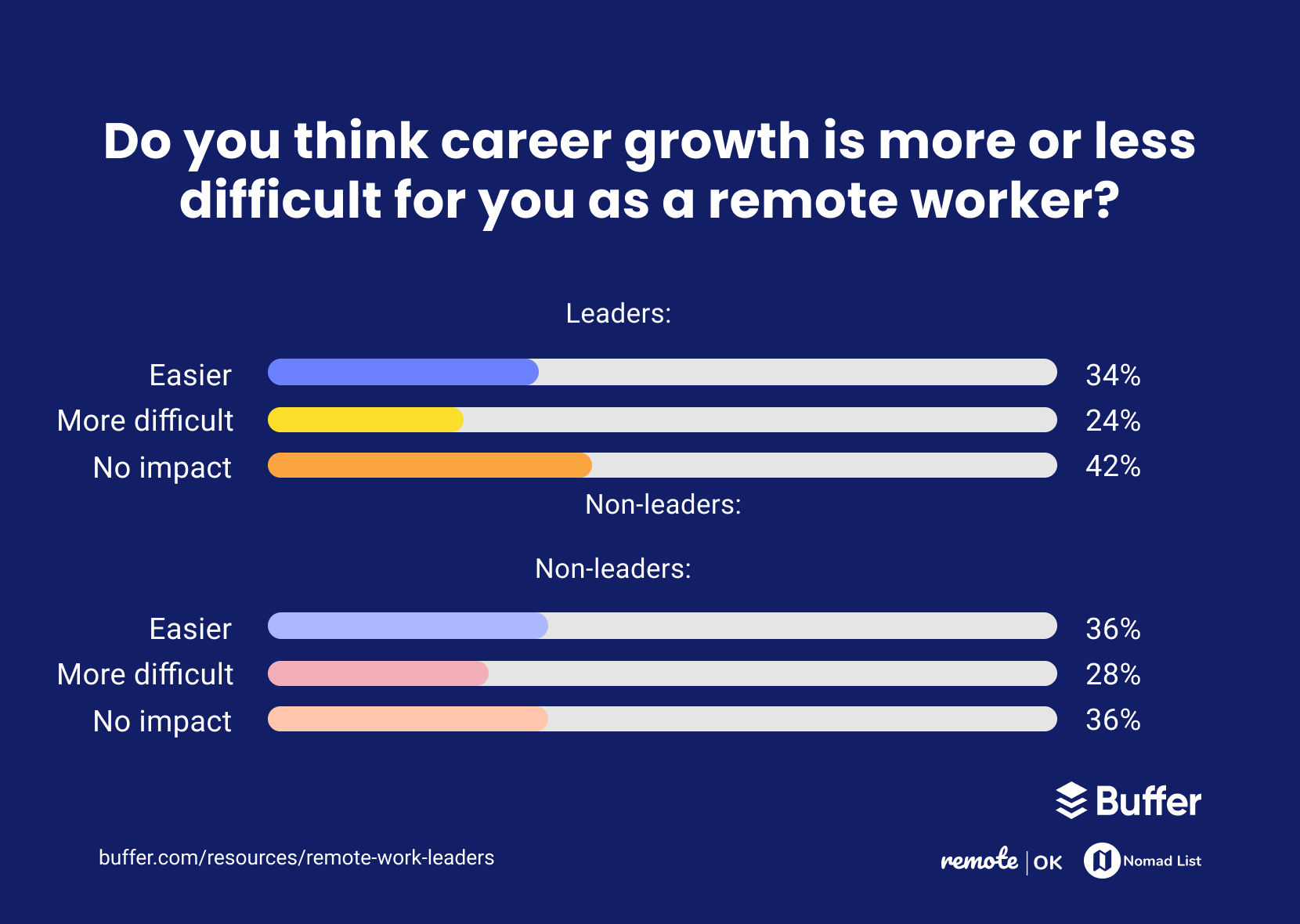
At the same time, remote work as a requirement for future roles is less important to leaders than to non-leaders, which is in line with leaders being more likely to choose hybrid options. Overall, leaders have a more nuanced stance toward remote work when it comes to career growth and the importance of remote work for their next role.
What’s going well for remote leaders
The landscape of remote work is different for leaders when it comes to what is going well for them, too. Leaders are slightly more likely to be somewhat or very engaged with their job — 65 percent of them selected this option compared to 58 percent of non-leaders. Leaders are also less likely to be looking for a new job.
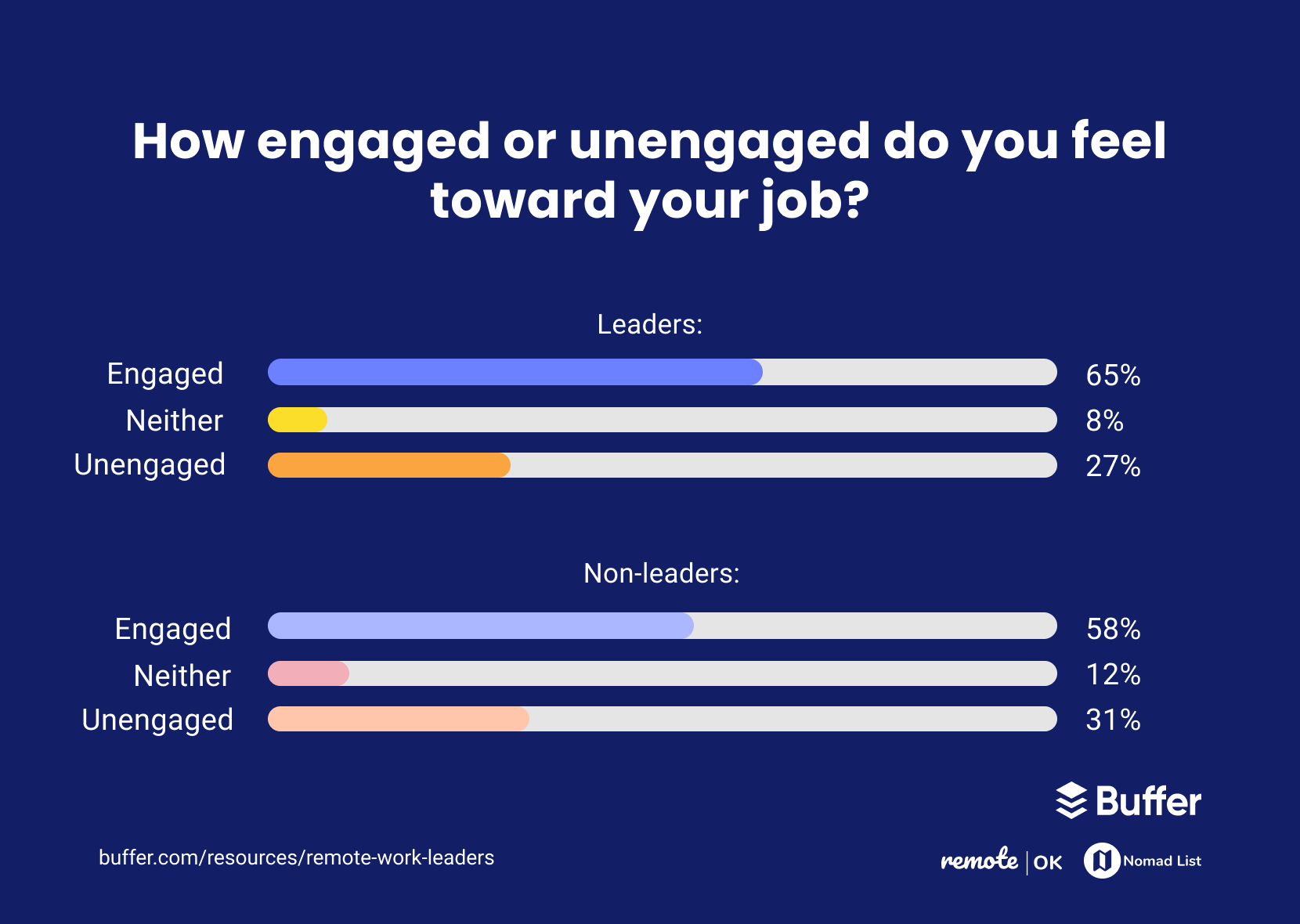
Related to feeling engaged in their roles, leaders also feel slightly more connected to their colleagues (80 percent compared to 75 percent of non-leaders). Part of that could be that leaders are also more likely to have attended in-person work events in the past year. Seventy-seven percent of leaders selected they had met up in person for work compared to 69 percent of non-leaders.
Overall, not all leaders want people back in the office, although leaders are more likely to want a hybrid setup.
Leaders have some very specific remote work struggles around boundaries. At the same time, they need to be aware that because of their position, they might feel more connected than their direct reports or non-leader colleagues.
We’d love to hear from you if you’re a people manager and you work remotely — does this resonate? Send us a tweet!

